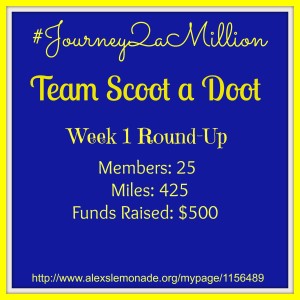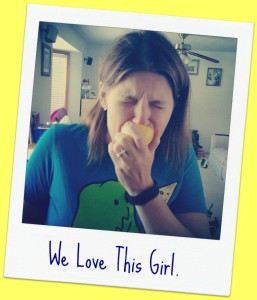On Sunday, Sept 8, 2013, I completed the Wisconsin Ironman.
Wisconsin is a full 140.6 mile Ironman which means a 2.4-mile swim, a 112-mile bike ride, and then you run a marathon. At least that’s how I used to explain it to people. (I would come to regret that phraseology later on.)
While the race started at 7 in the morning, the journey to get there started about 8 months earlier.
Many people tell you that it’s not finishing an Ironman that is as impressive as getting to the start line. This is because you train more than you can ever imagine training for something in your life….at least for us “recreational” athletes. My personal mindset was just to push through the training. And try not to kill myself in the process.
Let me note that I am not a life-long athlete. Before signing up for an Ironman, I had done one sprint tri two years before and hadn’t trained in the swim or bike since. I had six marathons under my belt, but it had been a couple years since I trained seriously and injury free. I suggest a year or two of tri-training before you undertake an Ironman. But it’s possible without it. I’m proof.
Since I had no clue what I was doing, I thought it best to hire a coach. I interviewed a couple of coaches and chose to work with Ben Proko of Trifit-XT. Ben has plenty of experience and his coaching style is nothing but supportive. His method uses metabolic data to assess your physical capability and he sets your training zones from there. I am an engineer. I like data and targets and measurable outcomes. Sold. Ben and his wife Katie (also a coach) were both important to my mental well-being.
Ben started me on a routine that basically repeated every week, just with increased time per activity. I ran, swam and biked three times a week each, and also did a strength routine 2-3 times a week (until I got closer to a race.) Yep. That’s 12 workouts a week. Two each day. Six days a week. And just like that, my entire life became about training.
At this point, I’d like to remind you that I still had a job. In order to get into the office at a reasonable time, I was generally up around 4:15 am, got one workout in, went to work, and then left to do another workout. This would often take me to about 7:30 or 8 pm, at which point I ate dinner, did laundry (LOTS and LOTS and LOTS of laundry), and packed my workout bags and lunch for the next day. By 9pm, it was time for bed. That is how your entire life becomes about training.
While I’m lucky that my workplace is flexible, my job is demanding and results-oriented and is sometimes designed to bring conflict into our organization. I do not have a cake-walk job. I missed some workouts…over 8 months of training, I missed quite a few. Ben set the priority for me that running and biking needed to come first and so that’s where I put my first effort. But slowly the strength workouts dwindled (um, yeah…even before Ben took them off the schedule) and it wasn’t unusual later in the program to miss a swim a week. It’s a lot to try and do. But if I had to work late and miss a workout, I worked late. You have to find balance.
Before we get to the big race, I want to mention the half-Ironman I did in Galveston in April because it set my expectations for the full IM in September. The water was a fraction of a degree above where they would let you wear booties and gloves…just at 65 degrees. My wave got into the water at 8 am (to start at 8:05 am) and the cold water was an immediate shock.
I calmed down and felt ok. Then I tried to put my face in the water. Nope. Not gonna happen. I couldn’t breathe properly (or at all, really) with my face in frigid water. Great. The gun went off, and I tried to swim. Nope. Still not able to get my face in the water.
Within a few minutes I realize I’ll wear myself out hyperventilating so I grab a kayak. Yes, I grabbed a kayak two minutes into the swim. I am so cool. It wasn’t a panic attack. My head was saying, “Really? Really? Like you’re going to quit now? Just start moving forward and get through the water so you can get on your bike.” And I did. I swam about a third of a mile with my head out of the water, then FINALLY settled into some sort of breathing pattern. I eventually started passing people from my age group and finished with about 10 ladies behind me. I chaffed the CRAP out of the back of my neck from swimming with my head out of the water, but I survived. I did the swim in less than an hour even with semi-dog-paddle technique and kayak-hugging.
The bike went well (Galveston is flat, but super windy) and during the run I came into my element. I ran while all those fancy-attired cyclists were suffering. I passed bunches of people. BUNCHES. And I felt great. I flew into the end of the race having done it in under 6:30. I was feeling phenomenal and proud as anything of myself. And at the end of the chute were two good friends from my running group in New Orleans, Betsy and Aaron. It was the perfect finish. Perfect.
Fast-forward 5 months and I arrived in Madison, Wisconsin for the full Ironman race. I was worried about the swim and confident about the bike and the run. (Silly me, it would turn out.) The Madison course is one of the hardest Ironman bike courses in the world. I chose it because the weather would be good and I had relatives close by in Chicago to cheer me on. And I didn’t know how hard the bike course was. I suggest doing more research before choosing your first race. I entered the wrong race for me. Where am I going to get big hills near Houston, Texas? But for now, I was here and ready to complete the course in front of me.
The morning of the race, I was quietly nervous. I knew I could do this. I knew it. I think you can already guess how worried I was about the swim. But the rest of the race could be done with sheer will and determination and reliance on 8 months of training. I had finished marathons in heat and hills with little-to-no training. I knew I had the ability to endure what was ahead.
Ironman events require that you finish within 17 hours. The race starts at 7 am, and you have to finish by midnight or you don’t get your medal. There are also cutoffs for each of the sports. The swim has to be done within 2 hours and 20 minutes from the starting gun (and Wisconsin was a mass start, so everyone had that same requirement.) If I made that cutoff, I knew I had the race.
As 7 am approached, we slowly made our way into the water and swam out towards the start. For me, the deep water start was desirable. I got accustomed to the water and now just needed to relax in the crowded mass start.
The gun went off. And I started to swim. I was in a regular breathing pattern immediately. HOORAY!! Even if I was breathing every two strokes instead of every three, there was no panic, no hyperventilation. Within a few minutes, I knew I had the swim, and therefore the race. I said a prayer of thanks to the tri gods. Now I just needed to settle in and move steadily through it all….which is hard in the swim because there are no lane lines in the lake. You try to sight something in front of you, but people are crawling past you and they realize they’re off course so they turn and you t-bone them. And then when you’re done quietly cursing them, you realize you’re off-course and you turn and someone t-bones you. It’s fun. Most people just keep moving. There are more aggressive conflicts in the front of the pack, but I’m not in the front of the pack. When I finished (in an acceptable 1:45), I was ecstatic!
Just out of the water I saw my tri-training partner Anjy who came up all the way from Houston to be there on the side of the course. She and I both stress out in the swim and it brought an even bigger smile to my face that she was right there cheering. I ran out of the water and up the helix (a pretty word for “multi-story parking garage ramp”) and at the top I saw a bigger group, including my boyfriend Jim, an amazing triathlete that I met during my 8 months of training. Jim scooped me up in a hug and spun me around. He was thinking what I was…that the swim was over and I had the rest of the race.
 Jen greets boyfriend Jim after her swim
Jen greets boyfriend Jim after her swim
I moved through transition and got onto the bike. It was a little disheartening that there were so many bikes gone by the time the time I got to mine, but later we heard rumors that over 200 didn’t even finish the swim…either missed the cutoff or crawled out of the water onto a boat. It was good to be moving in a comfort zone. The weather was in the mid-70’s and there was total cloud cover (I hate direct sunlight), but it was windy. We had a tailwind out to the main loop that we biked twice, and then it was a headwind back when you’re most tired. The hills were terribly hard but there were huge crowds at the top of the biggest.
Madison is a race where you constantly have to think and plan. It’s hard to take fuel when you’re climbing a hill or rushing down a slope so you have to plan to eat on just a few flatter surfaces. I had done a training camp in July where I rode the Madison course and that was definitely a good thing to have done. I never bothered to know marathon courses, but this was definitely different.
All over the course I had incredible support from family and friends. My mom, aunt, all four cousins and my college roommate drove up from Chicago. My sister flew in from Albany with her boyfriend. Anjy and her husband were up from Houston. I have never felt so deeply wealthy in my friends and family as I did on that course. They rode a bus out to the bike course to see me through two loops. It took me 6:47 to finish the hilly, windy bike course and they saw me probably just 20 seconds or so total. How’s that for a dedicated fan base?
 Jen zooms past her fans
Jen zooms past her fans
The ride back from the loops was like a death march. We were all tired and riding back to Madison into the wind in somber silence. But I made it, got through transition, and stepped out to start the run.
This is where the words, “and then you run a marathon” bit me in the ass. That’s a horrible way to visualize it when you’ve already been on the course for 9 hours. It took some effort to push that thought away and put one foot in front of the other. After all, in Galveston, this is where I made my mark. I was a runner, first and foremost! I thought about my running club, my closest running friends, my running partner Nick, and those who had turned triathlete like me. They were all following my GPS tracker and I couldn’t let them down. This would be the best part!
Or not.
The first two hours felt pretty good. And then I slowed down. WAY down. I didn’t hit the typical wall in terms of feeling overall sluggish and slow. I wasn’t dehydrated. My legs were just DONE. I was a runner, but not so much after 112 miles on the hardest, hilliest bike course I could find. My friends and family were out on the marathon course and since it’s a double loop, I got to see them about 4 times. I tried to make sure I was running when I passed them, but they knew and I knew I was slowing way down. A few of them stepped in and ran with me for a short while.
The second loop became about survival, about finishing. I walked a lot. I was nauseous until I gave up on Gatorade altogether and drank coke. I discovered that grapes are the best thing EVER to eat at the end of an Ironman. I had been here before in marathons…where you know you will finish, but that the finish line is a long way off. I just moved through. DNF was never a thought. And soon I was within a mile of the finish.
On the way up the busy street to the capitol square, I passed people who had had WAY too much to drink, who pounded me on the shoulder and high-fived me too hard. I was too tired to voice complaint.
When I hit the streets around the square, less than half a mile from the finish, I saw Jim with Anjy and her husband. A block later, I saw a couple of my cousins and my aunt. More familiar faces were in the finish chute. My family had spread themselves out along the last stretch and brought me in. It brings tears to my eyes now to think of it. They very nearly carried me.
I crossed the finish line in 14:15 with my arms over my head in victory. I cried a little. I hollered in triumph. I was done. Volunteers catch you and deal with medals and foil wraps and finishing shirts and hats. They took my picture.
 Jen finishes the race!
Jen finishes the race!
I realized I was disappointed. How crazy is that? I didn’t feel the euphoria I experienced in Galveston. Maybe it was because the last couple of hours were so slow, and that had surprised and disappointed me. But then there, at the end of the chute was my cheer squad. I saw and hugged Anjy first as she had been there with me at 4:30 am too many Saturdays and Sundays to count.
Then I saw Jim, who knew from his own hard training history what I had been through to get there. (Jim would also catch the brunt of my skepticism over my performance in the days to follow, God bless him.) The rest of my family and best friends closed around me and I felt richer than anyone there. I had survived 8 months of insane training balanced with a tough job in a new city…I even earned a promotion which I was offered the day I drove into Madison. I had achieved balance.
As I stepped out of the chute, the thought occurred to me, “Is that it?” Eight months of training, and 14 hours passed in a flash. THAT’S how people end up doing this over and over again. I think I probably will, too…someday. For now, I am truly content to sleep in and relax in the evenings…though I’m already starting to train for the Houston marathon in January 2014. But that’s nothing. I can make it through anything.
Because I am an Ironman.
Jen is a senior commodity manager at Momentive Specialty Chemicals. She’s completed six marathons and numerous shorter road races and loves the triathlon, consuming good books and delicious food and traveling.






